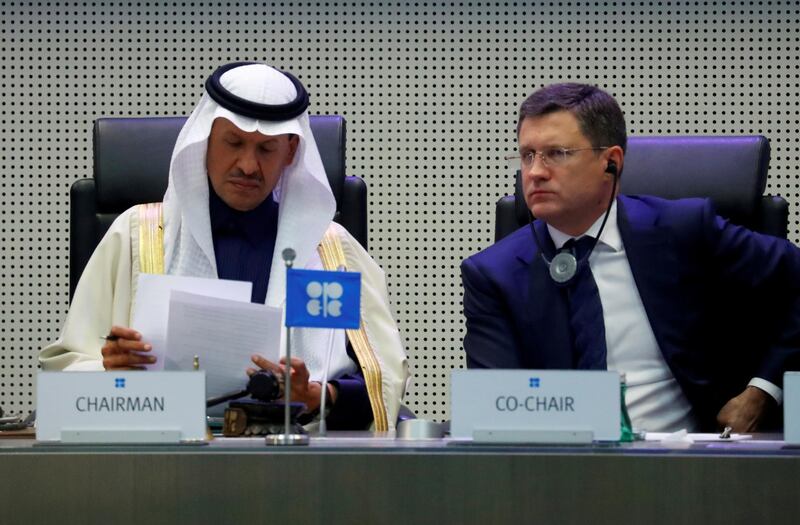Opec+ convenes its monthly meeting today and Thursday to review compliance to production quotas among members at a time of increasing fragility in the oil markets.
The producer alliance, headed by Riyadh and Moscow, has increased output incrementally since August. However, global demand for crude has weakened as a second wave of outbreaks in various parts of the world has led to restrictions being reimposed on mobility and gatherings.
Globally, Covid-19 infections are close to 30 million, with 939,968 deaths as of Wednesday, according to Worldometers, which tracks the pandemic.
A resurgence in Covid-19 cases will keep oil markets “fragile” for the remainder of the year, the International Energy Agency said in its latest monthly market outlook.
The agency forecasts a bearish outlook for crude, expecting demand to fall further by 8.4 million barrels per day, compared to its earlier estimate of 8.1m bpd for 2020.
Opec too slashed its forecasts this week, revising demand for this year and next to be lower by 400,000 bpd.
The exporters’ group sees demand decline by 9.5m bpd, resulting in an overall demand of 90.2m bpd for 2020.
“The slowness of the oil price recovery is testing the unity of the Opec+ group, which arguably increased production before demand had recovered enough to absorb the additional barrels,” Ole Hansen, head of commodity strategy told a media briefing on Wednesday.
Opec+ forged a historic pact, which saw the group draw back 9.7m bpd from the markets between May and July to balance the energy market. The group is currently cutting 7.7m bpd and exacted pledges from laggards such as Iraq, Nigeria, Kazakhstan and Angola to execute compensatory cuts until September.
The alliance’s technical committee is set to meet today to review compliance figures, with the ministerial monitoring committee expected to convene on Thursday.
Early reports by intelligence provider Argus suggest the alliance has achieved 101 per cent compliance with the latest set of curbs.
Opec+ will have to manage its own set of bearish data as well as that released by the IEA as it considers supply for the remainder of the year.
"The global oil demand recovery from the Covid-19 crater in April continues in 3Q20 although there are signs that oil demand pick-up is starting to wane,” Ali Malik, a senior investment adviser at the Bank of Singapore, said.
Demand for road fuel has been picking up as mobility increases, but demand for jet fuel remains slow, he said. The bank expects Brent crude to trend at $50 per barrel over the next 12 months and West Texas Intermediate to average $46 per barrel.
"We expect supply side rebalancing to offset slowing oil demand pickup to keep oil prices supported. Opec+ compliance is likely to remain strong and support oil prices while radical reductions in drilling across the world should remain in place until oil prices start to rise above $50 per barrel,” he said.
Brent, the most widely traded crude benchmark was up 2.42 per cent, trading at $41.51 per barrel at 5.19pm UAE time. WTI, which tracks US crude grades was up 2.64 per cent at $39.29 per barrel.
UBS analyst Giovanni Staunovo is more optimistic about the recovery in demand, citing recent Chinese economic data which is pointing to reviving industrial and retail demand.
“The economic recovery, the ongoing removal of mobility restrictions, and the restocking of goods—which should result in increased demand for truck and freight oil—should allow oil demand to still move higher over the coming months,” he said.








